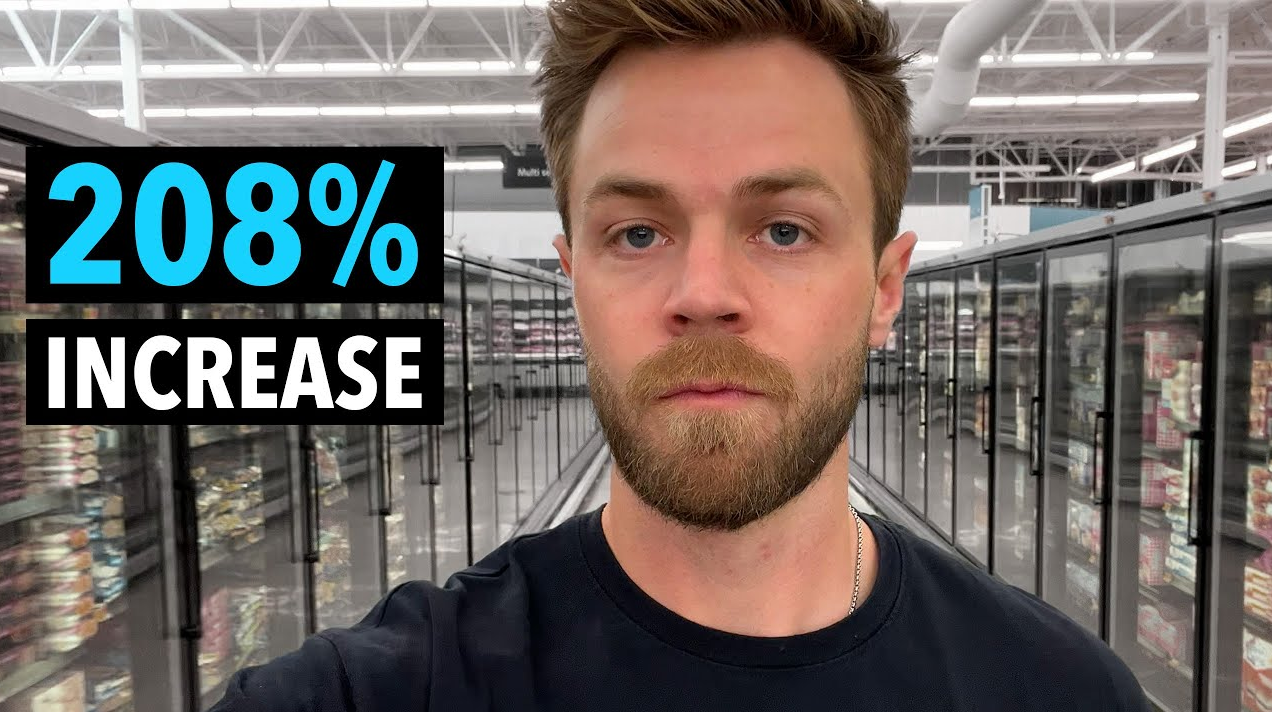 By Tyler Durden
By Tyler Durden
In 1906, Alfred Henry Lewis stated, “There are only nine meals between mankind and anarchy.” The sentiment was expressed right on the heels of a banking crisis which led to the Panic of 1907. The event was widely blamed on a liquidity crunch, and this same crisis was used as a rationale for the creation of the Federal Reserve Bank in 1913-1916. Of course, it is the central bank and its ability to generate fiat money from thin air (unbacked liquidity) that has led the US to the stagflationary disaster we face today. The “solutions” offered by establishment elites are often worse than the problems they are supposed to solve.
The total inflationary damage done to Americans consumers since 2020 varies according to who you ask. Stats from the Federal Reserve and government are muddled in a series of creative mathematics in order to make the situation look much better than it is. CPI is not a valid indicator of true inflation given it is watered down with over 80,000 items and services, and many of them are not necessities for the common US household. If we look only at necessities like housing, food and energy, the economic picture looks increasingly bleak.
Food, as Alfred Lewis noted, is particularly vital to civil cohesion. The human body can in fact survive up to three weeks without a meal, but the vast majority of people in the First World are not acclimated to such conditions and might just panic after one or two days without sustenance.
The potential for this scenario might sound exaggerated to those in a higher income bracket, but it’s important for these people to understand that a 25%-50% increase in food costs for them is not the same as a similar increase for people on a low or fixed income. For example, food price increases for the average middle-class to upper-middle-class households amount to around 11% of their annual income in 2023. However, for people in the low-income bracket, food costs now amount to 31% of their annual income. That’s a pile driver to the wallet.
The problem may also be even more pervasive than the data indicates, with inflation tracking under-representing real prices on the shelves. Just look at this price comparison of 2020 grocery expenses vs 2023 grocery expenses by one US consumer:
Prices are rising exponentially and low-income Americans just can’t keep up. In terms of SNAP benefits, over $3 billion were cut from total payouts in 2023, meaning food stamp benefits are decreasing as inflation rises. Social Security has seen an 11% increase from 2020 to 2023, but average costs have risen at least 25%-50% on most goods.
Over 42 million people in the US will rely on SNAP benefits in 2023, and that’s 4 million more people than those using SNAP at the end of 2019. Almost 12% of Americans stated they were food insecure in 2022 as opposed to 10% in 2019. Over 66 million Americans rely on Social Security payments as of 2023. In 2022, one-in-six Americans used food charity including food pantries in order to feed their families; that’s 16% compared to only 6% in 2020. Rising food inflation affects these people most, and the consequences are starting to become visible.
Identifying the problem is one thing, fixing it is another. Democrats would argue that these stats are simply more proof that government spending needs to increase. The thing is, it was government spending and Fed fiat money that created the crisis in the first place. The more the government spends the more the supply of dollars must rise, and the central bank is more than happy to oblige.
Conservatives would argue that spending cuts are needed and that taxes must be reduced. This would slow the effects of inflation but not necessarily reverse the damage already done. Cuts to welfare programs might suppress demand for goods and cause prices to fall, but then again, demand for food is a constant, it does not really disappear just because benefits disappear. Civil unrest in the face of ever diminishing food benefits needs to be taken into consideration.
There are cuts that can be made to the budget without pulling the rug out from under low-income families; the issue is, Democrats won’t allow them.
And so the debate circles round and round. The US, the “most wealthy nation on the planet”, has a food security problem and is on the verge of an inflationary calamity for millions of low-income citizens, all while it spends hundreds of billions of dollars on pointless climate change programs, diversity and inclusion initiatives and proxy wars. Something has to give, and the chances are growing that it will be the American consumer.
Source: ZeroHedge
Become a Patron!
Or support us at SubscribeStar
Donate cryptocurrency HERE
Subscribe to Activist Post for truth, peace, and freedom news. Follow us on SoMee, Telegram, HIVE, Flote, Minds, MeWe, Twitter, Gab, and What Really Happened.
Provide, Protect and Profit from what’s coming! Get a free issue of Counter Markets today.

Be the first to comment on "Ticking Time-Bomb: Food Inflation Is Crushing Millions Of Low-income Americans"